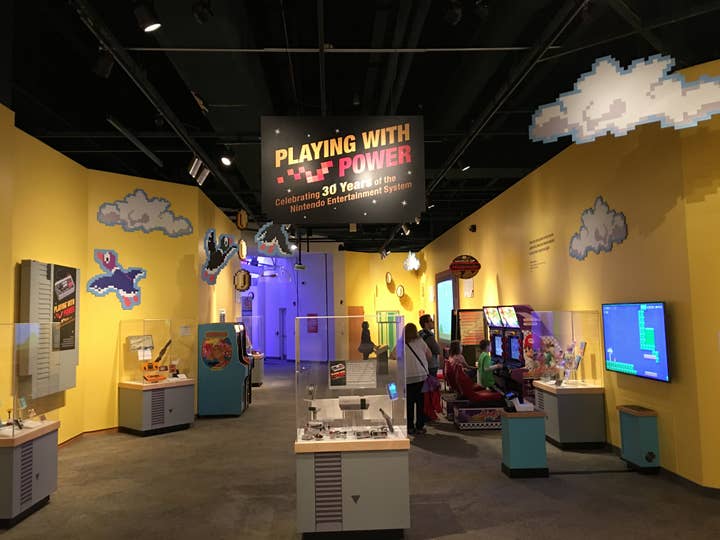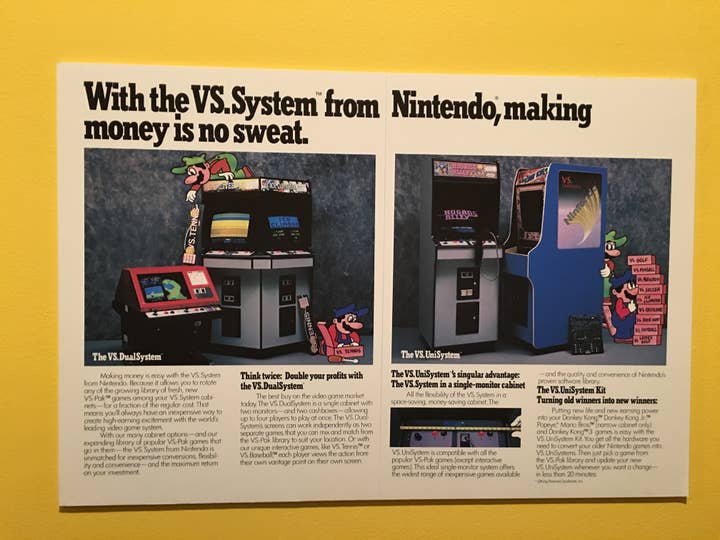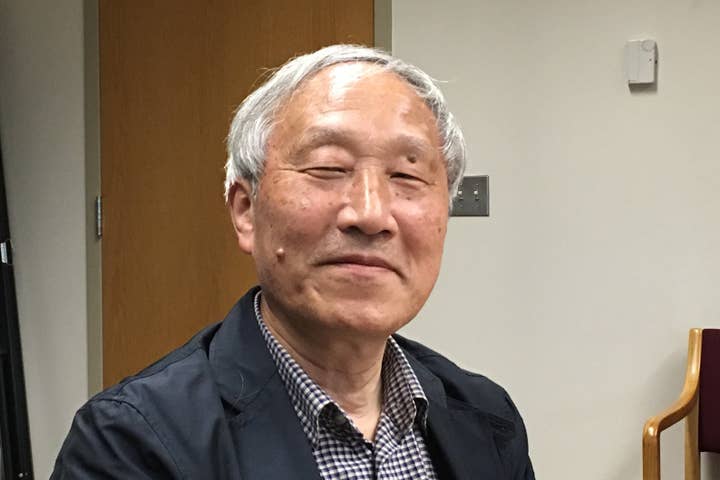"Nintendo has always been like that, we are like indies"
NES designer Masayuki Uemura on the console's impact and the state of the industry today
Most longtime gamers are instantly familiar with Nintendo legends Shigeru Miyamoto, Satoru Iwata or Eiji Aonuma, but how many actually know the name Masayuki Uemura? As the chief designer on the original Famicom in Japan and the Nintendo Entertainment System (NES) in the West, Uemura had a profound impact on the home console industry and arguably was its savior after it struggled mightily to maintain relevance in the wake of the '83 video game crash. Without the NES, who knows where the game industry might be today? Magnavox Odyssey creator Ralph Baer is often referred to as the "father of video games," but in many ways Uemura is the father of the modern console industry (NES was the first system to license third-party software, which is now standard practice).
I sat down with Uemura recently in Rochester, New York at The Strong Museum of Play's International Center for the History of Electronic Games (ICHEG), which was celebrating the 30th anniversary of the NES with a "Playing With Power" exhibit.

For someone of such import in Nintendo's storied history, Uemura is one of the most unassuming and modest people I've had the pleasure of interviewing. Back in the early '80s when Nintendo boss Hiroshi Yamauchi asked him to start thinking about designing a home console, Uemura was terrified. After all, would consumers really be receptive to another console after a flood of poor quality products ruined the market?
"I never thought about being a savior. I was just scared and wanted to succeed in America," he acknowledged. "By coming here 30 years later, like on this occasion, I finally realize that, yes, we did save the video game industry, but back then I had no idea."
Uemura went on to recount the long history Nintendo has in games with the arcades (including the much lauded VS system), licensing out Donkey Kong to Colecovision for use on its console, its Game & Watch and TV Game product lines and more. It's far too much to repeat here (he spoke enthusiastically for 20 minutes after just one question), but the long and short of it is that through observation of the market and the overwhelmingly positive reception in America to its arcade machines, Nintendo knew that US players were thoroughly enjoying their specific brand of software.

And while that was the first step to paving the way for the NES, Nintendo knew it had to clearly differentiate itself from all previous home consoles. Uemura noted that's why the NES looked so radically different from the Famicom in Japan. The NES was deliberately made to look more like the then-sophisticated VCR technology and was given a front-loading cartridge slot.
"When we [aired] TV advertisements, the potential customer could immediately figure out this one is different from Atari," he said. "We also proposed a new toy called Robot (R.O.B.) which responded to the reaction from the graphics on the TV screen... The other element was the Nintendo Zapper, a light gun, which was something different from any other home console game. Early on, we made sure the Robot and Zapper were going to play an important role in launching the Nintendo system. We also advertised the system at the mall so that people could play our games for free to test out how good they are."
As the head of the Nintendo R&D team for many years, Uemura was also the chief designer on the SNES, which went on to sell nearly 50 million units worldwide, not quite as good as the NES's almost 62 million. Sales aside, Uemura is still most proud of the Famicom than any other work, primarily because of the sheer challenge he and Nintendo overcame. "It was the most difficult... I fell in a rut many times creating it. Even after the launch of the product there were a lot of problems that we had to resolve," he recalled.
With Nintendo having breathed new life into the home console industry, it came as little surprise that a new entrant into the race would arise. Anyone who lived and breathed video games in the early '90s has fond memories of the console wars. Sega Genesis was outsold by the SNES but fared quite well, especially in North America. Uemura said he appreciated what Sega managed to achieve, but he also observed the beginning of a somewhat disturbing trend that may have had its origins in the 16-bit era: the graphics arms race. This only intensified by the time Sony entered the picture with PlayStation.
"For a couple decades the game publishers and hardware manufacturers were focusing on graphics processing power and sound effects and...not focusing much on innovating in game design and mechanics"
"You might know that we tried to collaborate with Sony once. We knew what Sony was thinking and what kinds of things they were trying to develop. During this time when Sony and other companies started launching products, people started realizing how difficult it is to create a game with great mechanics. Since the time of Game & Watch, Nintendo was doing their best to create game design mechanics that fully utilize the limited technological specifications. What happened was when they started launching those products with high quality graphic design they started emphasizing the graphics processing power - in other words, it wasn't just the game mechanics they had to focus on but they also had to focus on graphic expression and sound design, not just game design. That's how the market got saturated with all these kinds of products," Uemura commented.
"By contrast, Nintendo was always trying to push the limitations of new types of play. That was a difference between Nintendo product lines and the others. With the maturity of the game industry...it was time to start thinking about redefining the importance of mechanics and design. So for a couple decades the game publishers and hardware manufacturers were focusing on graphics processing power and sound effects and so forth and not focusing much on innovating in game design and mechanics."
Ironically, with consoles now as powerful as ever, the focus has in some ways returned to design over visuals, especially with more adults pressed for entertainment time. "Now that time is limited people are looking into mechanics and design,' Uemura noted.
While Uemura officially retired from his full-time position at Nintendo in 2004, he's been employed by them on a consulting basis and was therefore quite reluctant to discuss the company's current strategy and Wii U struggles. That being said, the Nintendo veteran remains supremely confident in the company's ability to bounce back. All it takes is one rising star. The next Miyamoto could be waiting in the wings to steer the company in new and exciting directions.
"If we have a second Iwata or a second Miyamoto, we don't know, there's a lot of employees there. Even the employees at Nintendo probably don't know. When an innovative idea comes up, we are the ones to actualize a product. I know they could do that. That's the potential that Nintendo has. The people who were working with me are now in important positions, management and so on, so I believe in them," he added.
Interestingly, with that in mind Uemura also commented on how Nintendo has always been driven by individuals - it's a slightly different notion of the indie concept, but it's from that perspective that he believes Nintendo itself is actually "indie" - not something you'd associate with a huge games corporation.

"From my perspective, the game industry has always been [steered by] indies because the idea of the individual has been quite crucial in making great games. When you try to fully utilize all the computing power, and graphics processing and sound effects, then you have to add more people and more staff to create games compatible with all the technology. But the one thing you could [leverage] is the individual powerful resource. Nintendo has always been like that, we are like indies," Uemura remarked.
"Every time we try to create some sort of paradigm shift where all the rules change, where the status quo changes, by coming up with new ideas. Wii is a prime example of that. It became popular beyond our expectations. That was a quite symbolic product for us, we felt like indies."
Time will tell how Nintendo's strategy will evolve as it prepares to unveil the NX platform, but regardless of its prospects the game industry owes much to Nintendo and Uemura. People who grew up with the NES are now in their 30s and 40s and games are fully embedded in mainstream culture. Uemura, who also does research on play at Ritsumeikan University in Kyoto, is still surprised by how far games have come. While he said that he feels society in Japan is "still a bit negative," he's been "impressed by how genuinely American people were accepting of video games as a medium."
Thanks to Aki Nakamura of Ritsumeikan University for his translation assistance

